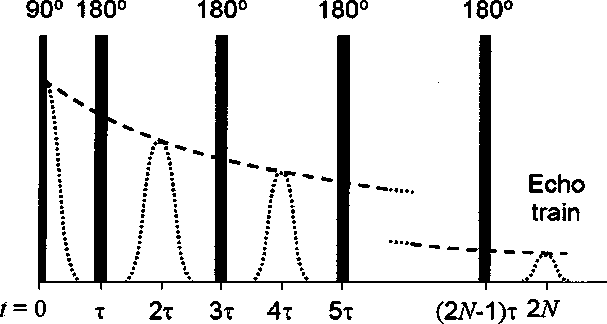Chapter 3
magnetization in longitudinal direction and transverse plane at time t. 7^ι and T2
are time constants, which are referred as longitude relaxation time and transverse
relaxation time.
T2 can be measured by CPMG (developed by Carr and Purcell[3] and refined
by Meiboom and Gill[4]) measurement. For CPMG measurement, the spin echoes
are produced by the a series of 180o rf pulses following the preparative 90o pulse,
as shown in Figure 3.1 t5j. As time proceeds, relaxation of the magnetization takes
place and the amplitude of the spin-echo is generated after 180o re-phasing decay.
In the experiment, decay of echo magnitude in the transverse plane is measured
and the equation for the relaxation is [5]:
M(2nτ) ™ 2n τ
m

[3-2]
——----= ∕f exp(--) ; 0≤n≤N ; m< N;
Mxy (O) ⅛j, fv t2∕

Figure 3.1 Sequence of CPMG measurement
Here N is number of 180o rf pulses, Mxy(O) is the amplitude corresponding to
39
More intriguing information
1. Large-N and Large-T Properties of Panel Data Estimators and the Hausman Test2. Cryothermal Energy Ablation Of Cardiac Arrhythmias 2005: State Of The Art
3. How we might be able to understand the brain
4. The name is absent
5. Co-ordinating European sectoral policies against the background of European Spatial Development
6. The name is absent
7. The name is absent
8. The name is absent
9. The name is absent
10. Mortality study of 18 000 patients treated with omeprazole